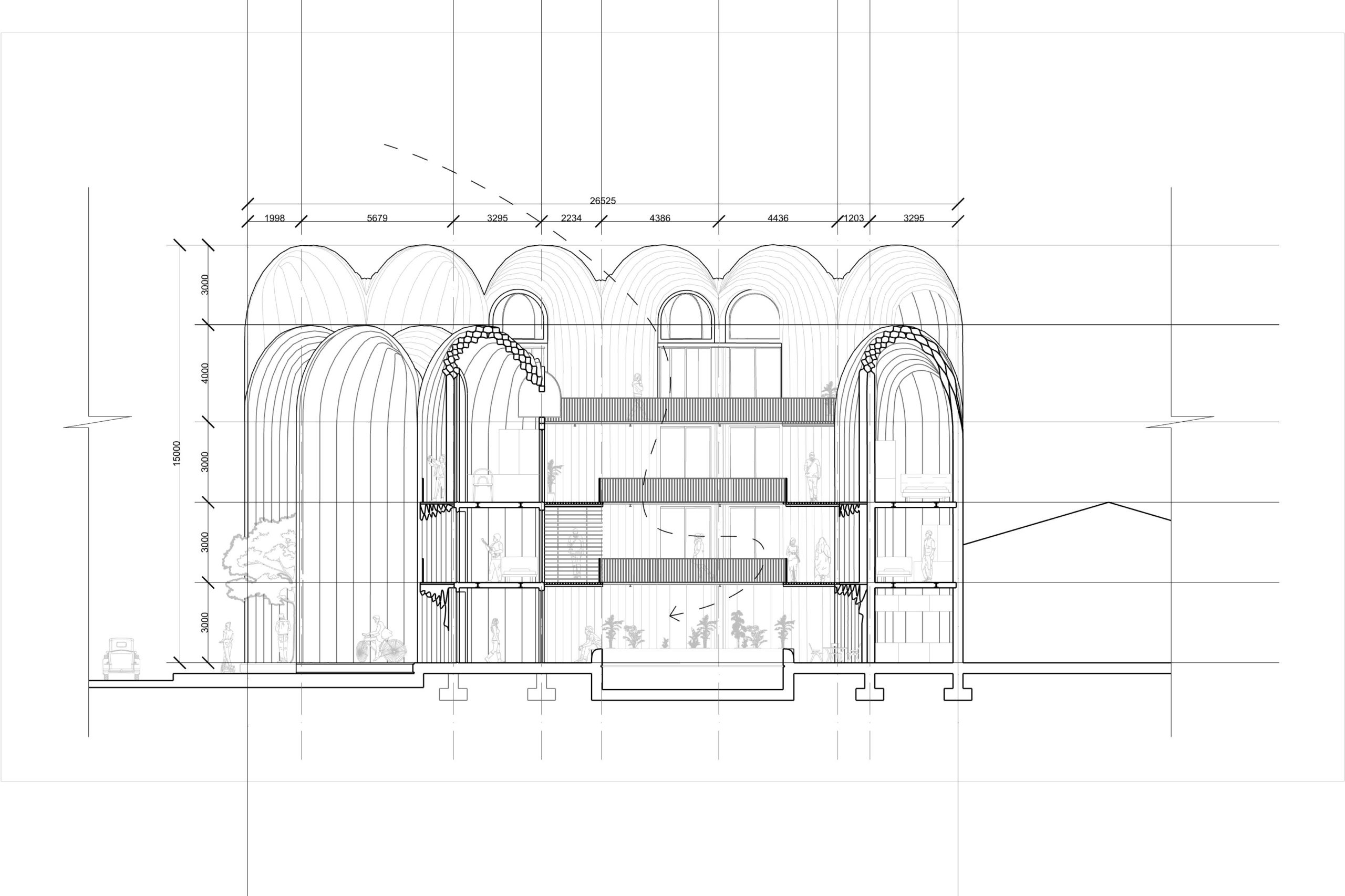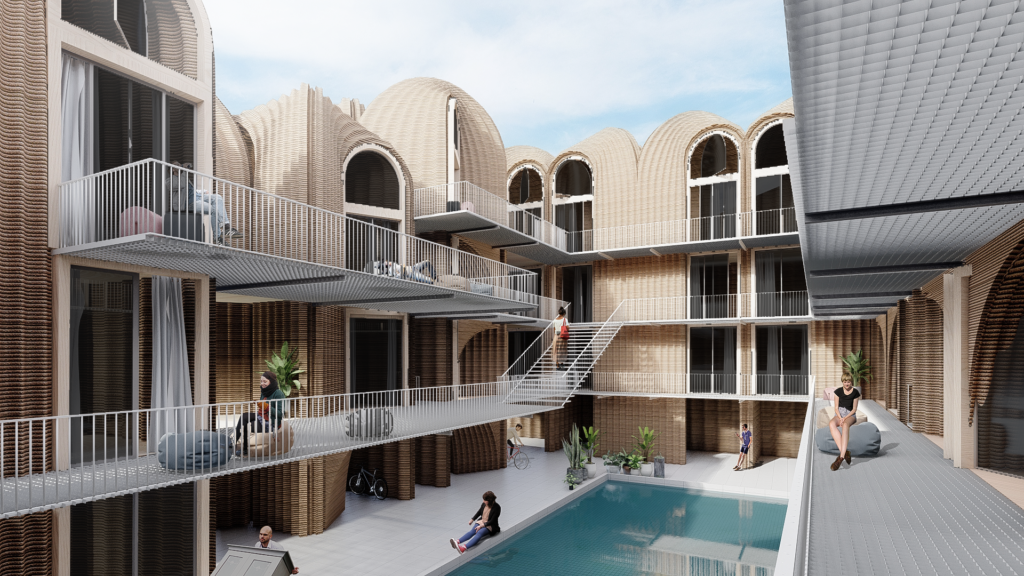How can we print a multistory student housing facility using earth and what techniques should we use to cover the fifth facade?
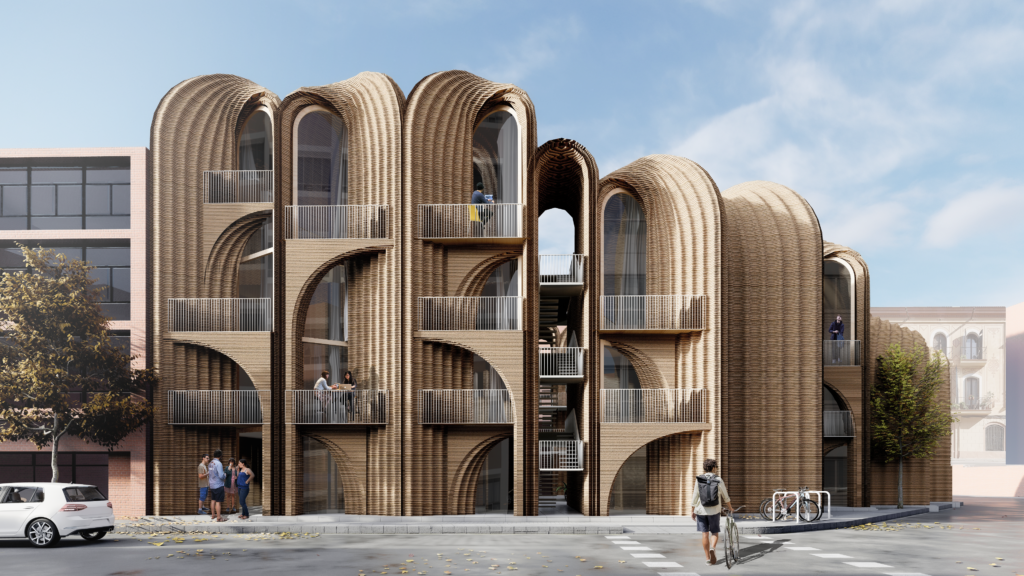
As 3dpa students studying in Barcelona, we found it quite difficult to find short-term housing in Poblenou with the amenities we required. Here is where we began, with the goal of providing accommodation for all short-term IAAC students. A facility that is simple to use and provides a location for students to live and dine, spend their leisure time, learn, and study for as long as feasible. We designed a multistory Student Apartment Building to house 40 IAAC students studying in Barcelona.
01 – The Site
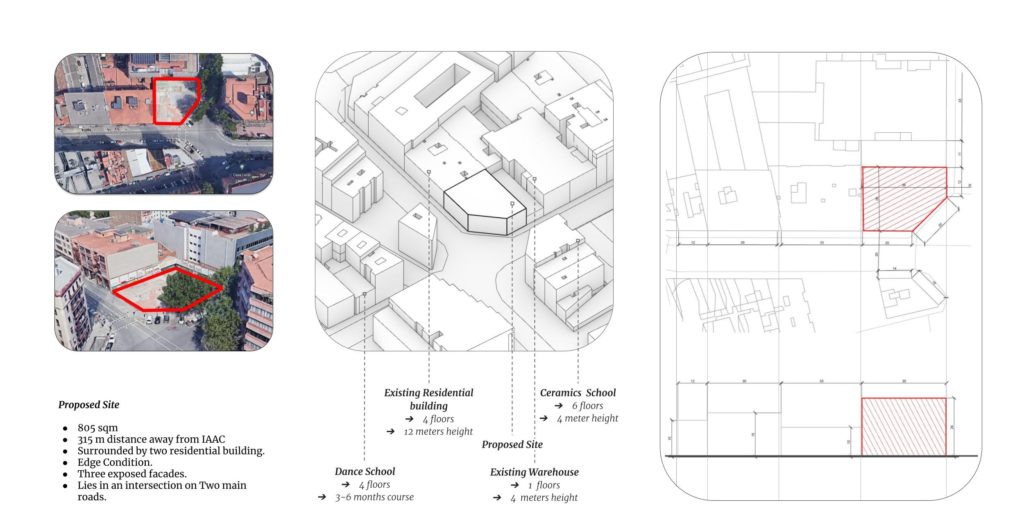
After several site choices, a site that was about 805 square meters and about 315 meters walking distance from IAAC was settled on. This proposed site is located two blocks away from IAAC and is about 805 square meters. In addition to being situated between two residential buildings, it lies at the intersection of two main roads and features three facades exposed to the outside world.
Sunlight hours and radiation analysis
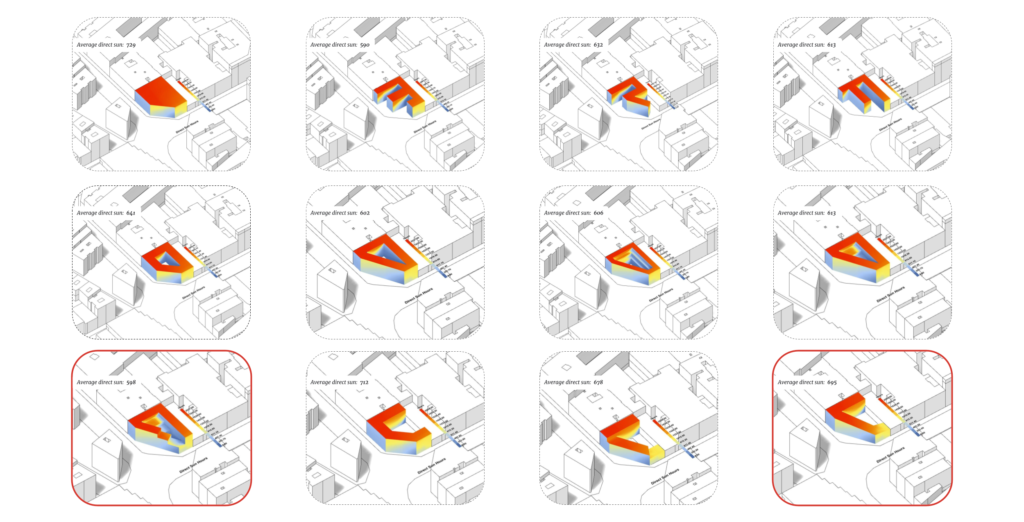
After choosing the location, research was done on various forms and analyses was conducted on the radiation and sunlight exposure for each form. Based on this the most efficient building form was chosen due to these assessments. This guarantees that the structure is made to maximize natural light and reduce energy use.
02 – Tectonics
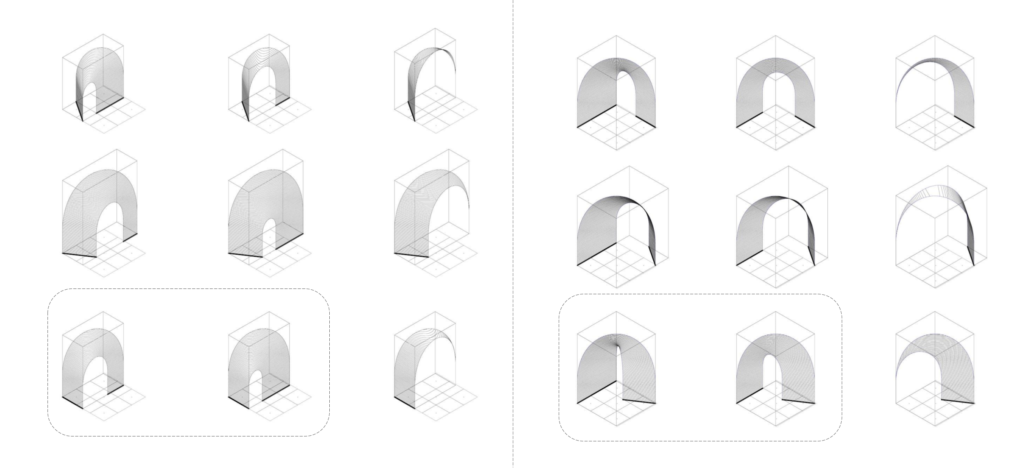
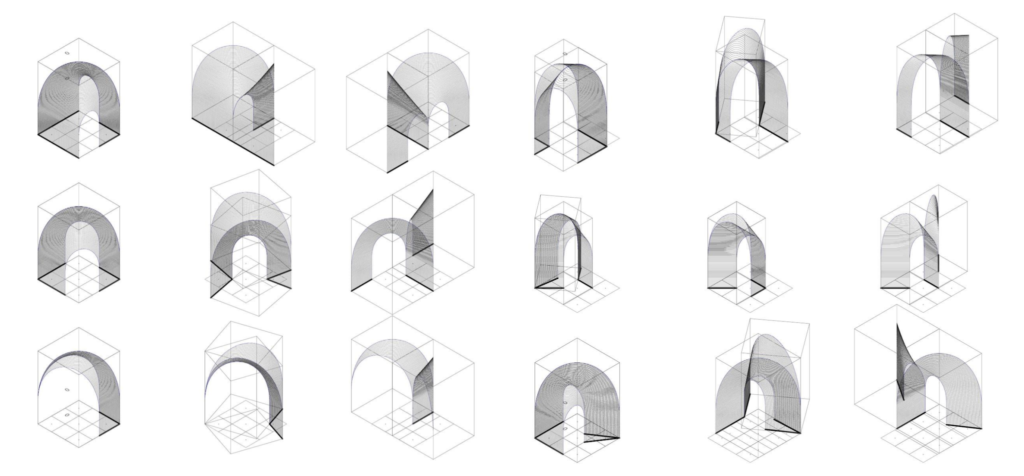
The tectonics of the arch were driven by previous experiments during the Competition phase. During this phase, one wall and two wall tectonics, as well as the intersection of these walls, were given greater weight. Aside from these variations, the two arches were also considered. As a result, a script was created that will accept any given connection angle, height and thickness.

03 – The Design
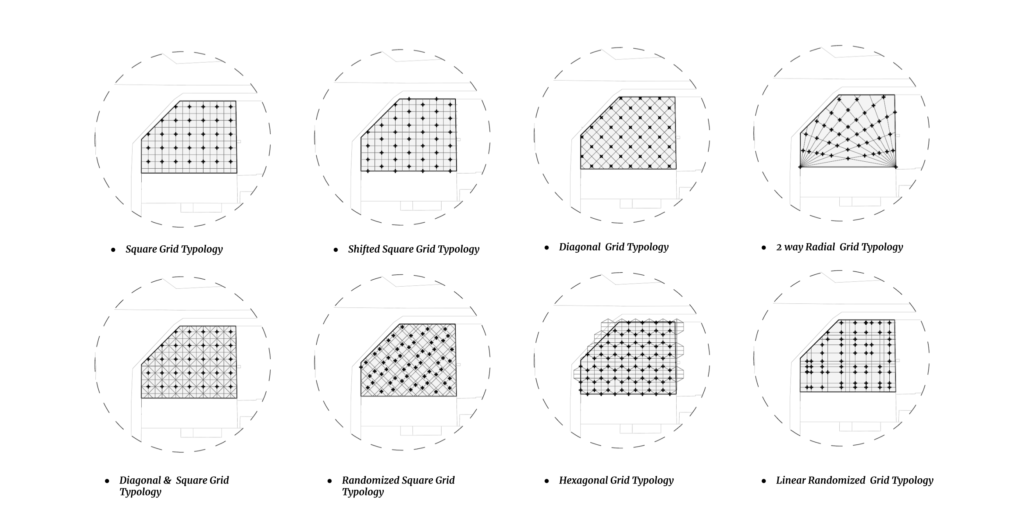
Following the selection of the site, a study of different grid systems was conducted to determine which best fits the proposed tectonics. A square grid was chosen with all rooms facing the courtyard, giving each unit direct access to fresh air, sunlight, views, and shared spaces. Aside from these considerations, the position of the crane was taken into account, as a crane would be able to print a room at a time without moving.
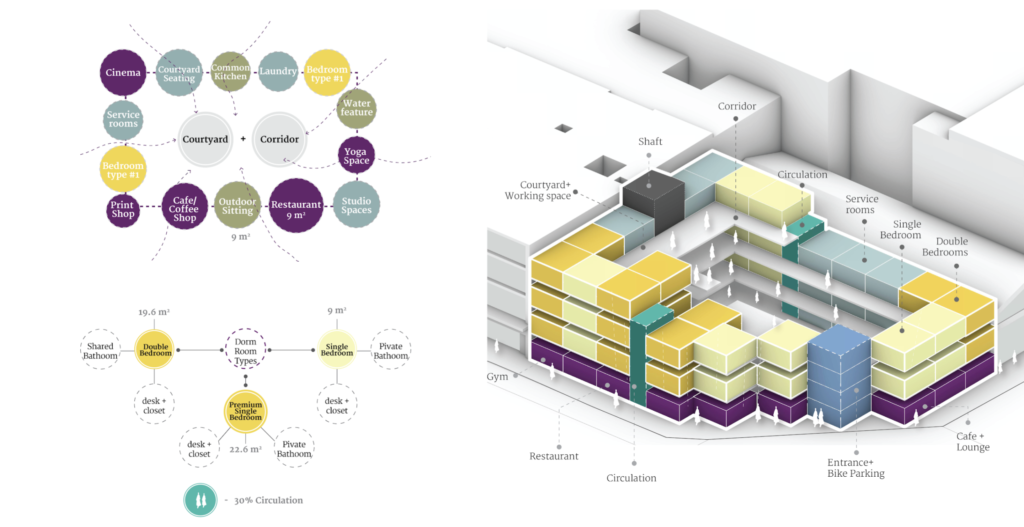
A central courtyard with a water feature serves as the focal point, aiding in temperature control and natural light. There are 30 bedrooms on the 800 sqm plot, with three types of bedrooms with single and double beds ranging in size from 9 to 22m2, and wide social corridors connecting them all.
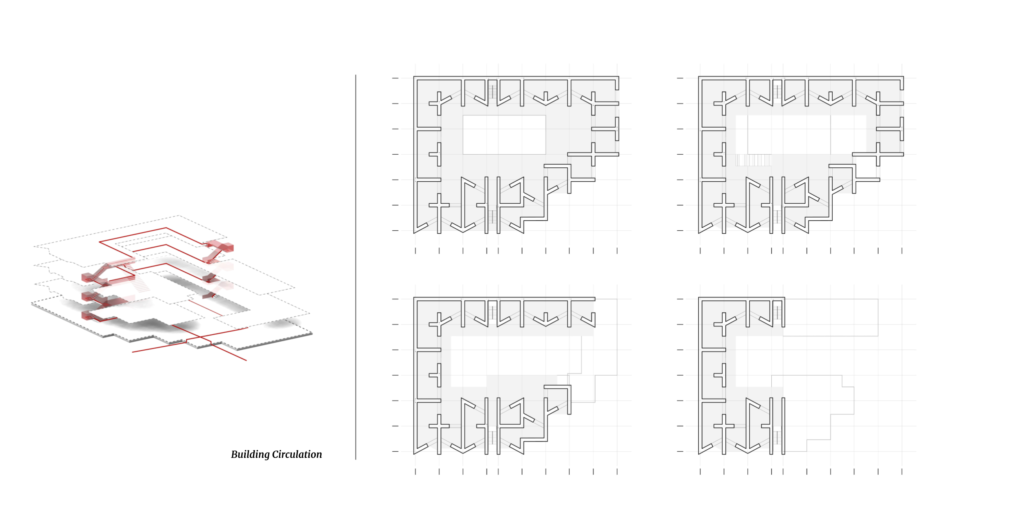
The floor stagers are visible as one progresses up each level, which was a strategy used to blend in with the two neighboring buildings. As one ascends from the ground floor, the privacy increases because it is less accessible to the general public. Aside from the circulation injected along the facade, there is an alternative access at the back side, as well as several alternating access points from one floor to the next looking towards the courtyard.
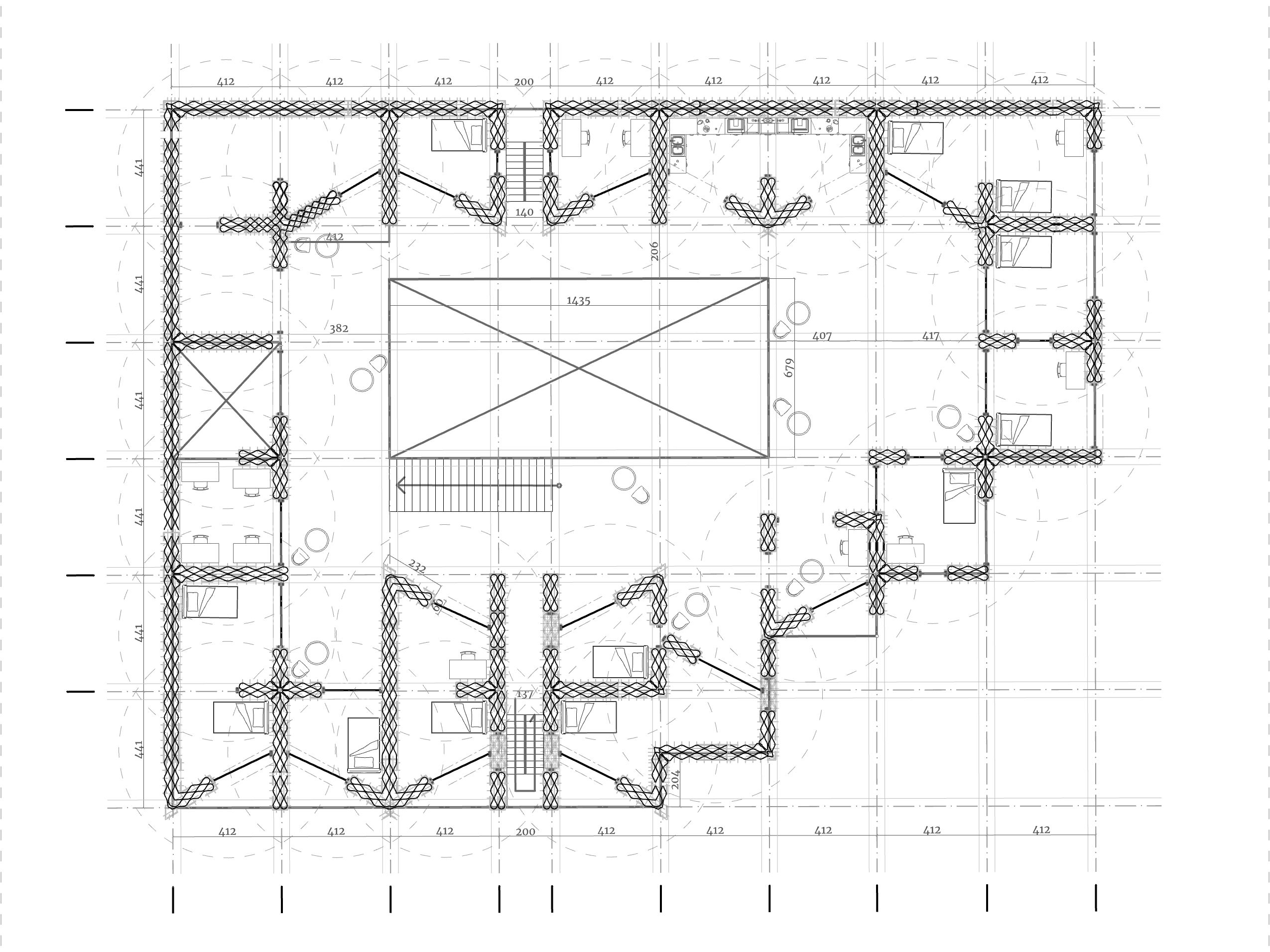
The ground level was left accessible to the public, with amenities for both students and the general public, for the building to be in use. It was meant to foster opportunities for social interactions between the students by carefully installing wider passageways in specific locations around the building.
